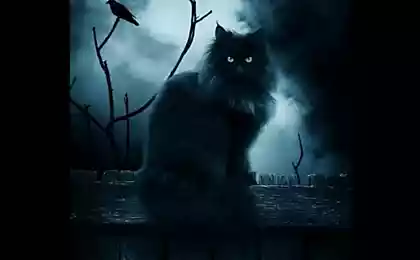677
Early Europeans had dark skin and blue eyes
Their genome is 40% different from the genome of modern evropeytsev
In 2012, archaeologists found in the Spanish cave undamaged skeleton of a man who lived 8,000 years ago. Now scientists have decoded its genome and have learned a little about the life of ancient hunter-gatherers in southern Europe.
La Briansk people (so called) was in the same grave with the other person, and they were spread around the teeth of red deer, probably had to the ancient people of the symbolic significance - the deer could be the main source for human meat.
La Briansk man was part of the people of hunters and gatherers who emigrated to southern Europe from the Middle East - and the peoples of the East Europe at the time, seems to have traded with each other and have similar cultures. Also they have common physical traits such as blue eyes and dark skin.
Modern Europeans such a combination is uncommon. Although today's Southern Europeans tend to be slightly darker than the north, they have a relatively light skin compared with Africans. The changes relate to the need to absorb more sunlight and produce enough vitamin D.
Although La Briansk person was a nomad, in its genome, the implications for farmers. Scientists know that a sedentary lifestyle made possible by agriculture, changed the human genome, and gave him a better chance to survive - so people can protect themselves from infectious diseases, while living in large groups.
The same seems to be true for the nomads of the Middle East, left the East to wander through Europe. The immune system of La Briansk man was able to fight tuberculosis, pneumonia and malaria, which people can catch from animals like cows domesticated or sheep.
Of the 40 genes of 24 (60%) identical to the genes of modern Europeans, which means that the first resist pathogens La Briansk individuals would. But digesting starch and digest lactose, he is not very good: the genes involved in the assimilation of food, barely emerged from the hunters and gatherers. So La Briansk man was part of the society, gradually moving from a nomadic lifestyle to farming - during key points in history.
via factroom.ru

In 2012, archaeologists found in the Spanish cave undamaged skeleton of a man who lived 8,000 years ago. Now scientists have decoded its genome and have learned a little about the life of ancient hunter-gatherers in southern Europe.
La Briansk people (so called) was in the same grave with the other person, and they were spread around the teeth of red deer, probably had to the ancient people of the symbolic significance - the deer could be the main source for human meat.
La Briansk man was part of the people of hunters and gatherers who emigrated to southern Europe from the Middle East - and the peoples of the East Europe at the time, seems to have traded with each other and have similar cultures. Also they have common physical traits such as blue eyes and dark skin.
Modern Europeans such a combination is uncommon. Although today's Southern Europeans tend to be slightly darker than the north, they have a relatively light skin compared with Africans. The changes relate to the need to absorb more sunlight and produce enough vitamin D.
Although La Briansk person was a nomad, in its genome, the implications for farmers. Scientists know that a sedentary lifestyle made possible by agriculture, changed the human genome, and gave him a better chance to survive - so people can protect themselves from infectious diseases, while living in large groups.
The same seems to be true for the nomads of the Middle East, left the East to wander through Europe. The immune system of La Briansk man was able to fight tuberculosis, pneumonia and malaria, which people can catch from animals like cows domesticated or sheep.
Of the 40 genes of 24 (60%) identical to the genes of modern Europeans, which means that the first resist pathogens La Briansk individuals would. But digesting starch and digest lactose, he is not very good: the genes involved in the assimilation of food, barely emerged from the hunters and gatherers. So La Briansk man was part of the society, gradually moving from a nomadic lifestyle to farming - during key points in history.
via factroom.ru
Existing stereotypes in society much more accurately predict the behavior of people than psychology
Only in the human brain there is an area that can calculate different options























